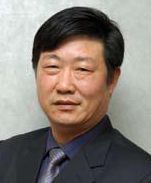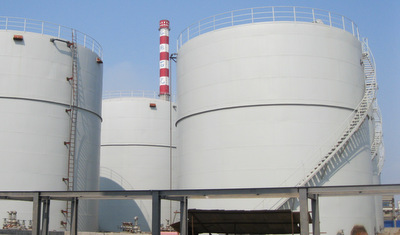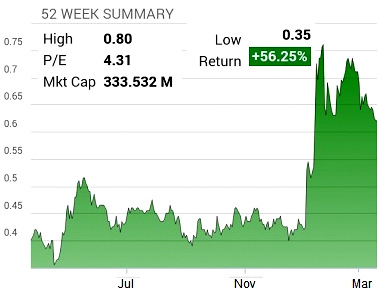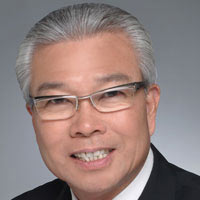'SunVic Investor' contributed this article to NextInsight Marie Pierre Chevallier, Global President of acrylics business unit at Arkema.
Marie Pierre Chevallier, Global President of acrylics business unit at Arkema.
Photo: CompanyARKEMA, a leading French chemical producer, inked an agreement in January this year to purchase SunVic Chemical’s acrylic acid (AA) factory in Taixing City, China, for RMB 3.9 billion.
The rationale for the purchase, along with other relevant aspects, was provided by Arkema’s global president for acrylic business on its website.
The Taixing factory has two existing 160,000-tonne AA production lines and another line of the same capacity under construction. Singapore-listed SunVic has 205,000-tonne AA production capacity in another city, Yancheng.
The SunVic Board has indicated that the asset sale is desirable as it will result in significant financial gain for SunVic and unlock significant value for shareholders.
It has also indicated its intent to rebuild SunVic’s AA capacity at a later stage. (Interestingly, SunVic is not barred from doing this by Arkema which currently is a customer of SunVic.)
|
1. SunVic's sale of the AA production assets will take several steps to complete. If SunVic shareholders approve the disposal of the Taixing factory at an EGM, Sunvic’s wholly-owned Taixing Jurong, which holds the AA assets at the Taixing city, will transfer the two existing AA lines to an entity known as Sunke. By Dec 2014, Arkema would have paid RMB 1.45 billion for a 55% stake in Sunke. Taixing Jurong’s stake in Sunke will be cut to 45%. 2. Taixing Jurong is expected to complete construction of the third AA line by 1Q 2015. It will then apply for trial production. When approval is granted, Arkema and Taixing Jurong will inject RMB 385 m and RMB 325 m respectively into Sunke. Arkema will then have the option to buy over Taixing Jurong’s 12 % in Sunke, for RMB 1.065 billion. 3. Finally, Arkema has another option to wholly own Sunke by paying RMB 1 billion for Taixing Jurong’s remaining 33% stake in Sunke. When all is said and done, SunVic will realise a profit of RMB 1.87 billion from the aggregate of RMB 3.9 billion received from Arkema. (The amount of tax on the gain has not been disclosed by the company. For discussion sake, the full 25% company tax rate is assumed, giving rise to a net amount of RMB 1.4 billion.) Arkema has also agreed that SunVic would be entitled to the output from one AA line – and sell it for its own account -- as long as Taixing Jurong has a stake in Sunke. It is likely that Arkema will exercise the two options promptly as it is in its interest to own the full output of the Taixing factory. |
Why the asset sale is positive for SunVic
 Sun Liping, founder and controlling shareholder of SunVic with a 61.7% stake. He was its executive chairman until last year. In the first nine months of 2013, the profit generated by the two existing two AA lines at the Taixing factory amounted to RMB 153 m. This translates into an annual profit of RMB 200 m.
Sun Liping, founder and controlling shareholder of SunVic with a 61.7% stake. He was its executive chairman until last year. In the first nine months of 2013, the profit generated by the two existing two AA lines at the Taixing factory amounted to RMB 153 m. This translates into an annual profit of RMB 200 m.
Let us assume that Arkema will exercise its two options in late 2015, allowing for a 9-month wait for the green light for the trial production of the third line.
Between now and its full disposal of Sunke, Sunvic is expected to book the following profits:
(a) RMB 200 m in 2014 attributable to the two lines (assuming Arkema buys a 55% stake in Sunke around end-2014), and
(b) RMB 100 m in 2015 attributable to one line.
Therefore, before the RMB 3.9 billion asset sale proceeds are fully received, Sunvic will forego only RMB 100m in profit, in 2015.
By my estimate, the overall financial gain of the deal for SunVic is in fact RMB 1.7 billion (RMB 1.4 billion net asset sale gain + RMB 300 m profit in the interim period until full disposal of Sunke).
In my view, the cash inflow and the profit from the deal are key to appreciating the positive impact that the deal will have on SunVic.
SunVic’s high borrowings (RMB 2.9 billion as at 31 Dec 2013) present risks.
 This plant, originally designed to produce propylene, has been reengineered to produce MTBE from 1Q this year. Photo: CompanyOne of the contributing factors to its current high gearing is the failed venture of a RMB 1 billion cracking plant to produce propylene, a key feedstock for manufacture of acrylic acid, from crude oil.
This plant, originally designed to produce propylene, has been reengineered to produce MTBE from 1Q this year. Photo: CompanyOne of the contributing factors to its current high gearing is the failed venture of a RMB 1 billion cracking plant to produce propylene, a key feedstock for manufacture of acrylic acid, from crude oil.
The plant became a white elephant when the Chinese government removed an exemption on imported crude.
(Subsequent to that, in 2013, SunVic spent RMB 100 m to reconfigure the plant to produce MTBE, an additive that helps petrol burn better. According to the company, MTBE production is scheduled to start in 1Q 2014.)
If the Taixing factory is not sold, Sunvic will take about seven years to rake in RMB 1.9 billion of profit (RMB 200 m each in 2014 and 2015, and RMB 300m from three lines, assuming the third line starts commercial production in 2016, for five years).
During that period, SunVic will have to contend with the financial risk of its heavy borrowings.
In 2013, SunVic earned a profit of RMB 375 m (after depreciation of RMB 261m). As 2014 is not expected to be worse, SunVic should be able to earn as much this year.
The RMB 636 m cash flows in 2014 and the first payment of RMB 1.45 billion from Arkema will reduce its borrowings sharply, from RMB 2.9 billion (as at 31 Dec 2013) to around RMB 820 m by end-2014.
Expected 2015 profit is RMB 275m with revenue from one line (instead of two in 2014), not counting reduced interest expenses (RMB 147 m in 2013) on sharply lower borrowings during the year. Depreciation will be reduced to around RMB 100 m with the transfer of two lines to Sunke (likely in late 2014).
 Despite a strong run-up from end-2013, SunVic shares (62.5 cents) currently trade at 4.3X earnings. Chart: BloombergBorrowings will come down to RMB 450m by the end of 2015.
Despite a strong run-up from end-2013, SunVic shares (62.5 cents) currently trade at 4.3X earnings. Chart: BloombergBorrowings will come down to RMB 450m by the end of 2015.
It should be noted that SunVic will be able to reduce its borrowings further. This is because besides free cash of RMB 341 m (as at 31 Dec 2013), SunVic had pledged RMB 441 m for the current heavy borrowings.
When SunVic pares down its borrowings, a significant amount of its pledged money can be released to further reduce the loan amount.
By the time Arkema pays the remaining RMB 2.45 billion to completely own the 3 production lines, SunVic’s net cash may amount to RMB 2.9 billion, or even higher if the MBTE plant generates enough cash flows.
|
√ SunVic has seized a very good offer from Arkema which would lower its high borrowings very quickly. This reflects prudence on the part of the Board. With a stronger balance sheet, SunVic would be in a better position to time the rebuilding of its AA business. √ For those who were disappointed by the non-payment of even an ordinary dividend despite a strong profit of RMB 375 m in 2013, there is the strong prospect of an ordinary dividend and a special dividend at a later date when SunVic has slashed its borrowings. |
Recent story: CIMB: SunVic attractive on buyout; Nam Cheong has good 2014 start






